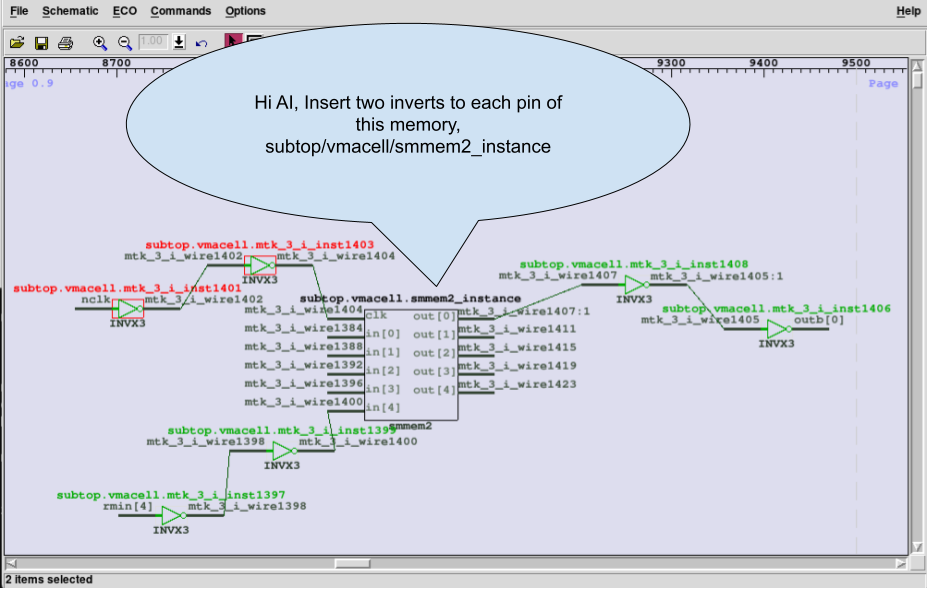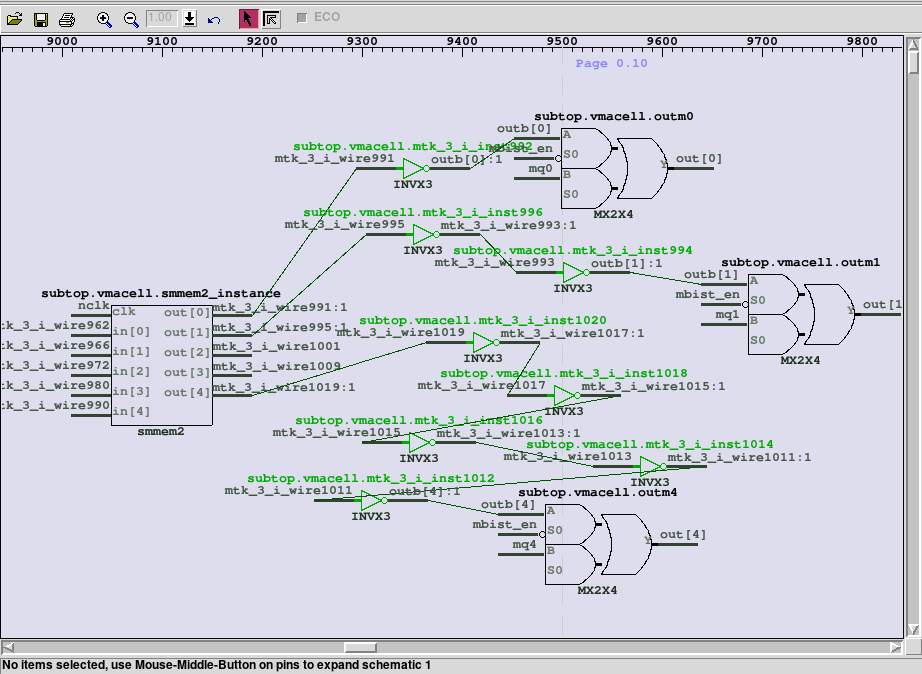Artificial Intelligence is evolving rapidly, and its integration into EDA is making netlist ECO flows smarter than ever. With the support of AI agents, highly complex ECO operations can now be executed using simple natural language instructions. This represents a major shift from manual scripting and tedious command writing to an intuitive, AI assisted workflow.
Traditionally, ECO engineers needed to write precise scripts to manipulate gates, pins, and connections. Now, AI agents can translate natural language commands directly into executable ECO scripts. For example, consider the following instruction:
GOF Prompt
AI Reasoning
Execution
While the AI agent executes the command flawlessly, practical ECO flows require robust verification. This is where GOF's powerful schematic debug feature becomes indispensable. It allows engineers to visually inspect the changes in real-time, ensuring the AI's actions align perfectly with the design intent.
Using the fully interactive and incremental schematic, an engineer can instantly visualize the netlist before and after the modification. By simply clicking to expand logic cones, tracing drivers, or analyzing fanout paths, they can confirm that the two inverters were inserted correctly on each pin. This seamless integration of AI-driven automation and human-centric visual debugging makes the entire process not only faster but also more reliable and trustworthy.

Figure 1. The AI agent automatically inserts two inverters to each pin of the target memory instance.
AI agents also excel in following experimental or more advanced prompt commands, allowing dynamic logic manipulation. For example, a user can request inverter insertion based on pin name patterns:
GOF Prompt
AI Reasoning
Execution
Figure 2. Each pin receives a number of inverters determined by the digit in its name.

Figure 2. Each pin receives a number of inverters determined by the digit in its name.
These examples demonstrate how AI is transforming ECO flows from script intensive processes into intelligent, interactive sessions. Instead of worrying about syntax, engineers can focus entirely on design intent while AI handles script generation, syntax correctness, and automation.
The practicality of this AI-driven flow is further enhanced by GOF's schematic debug capabilities, which allow for immediate visual verification of the complex changes performed by the agent.
Speed: Complex ECO operations can be completed in seconds.
Accuracy: Reduced risk of human scripting errors.
Flexibility: Supports both straightforward and experimental commands.
Scalability: AI can handle logic operations across large hierarchical designs.
In short, AI‑powered ECO brings a new paradigm—bridging human intent and machine execution seamlessly. What once required deep ECO scripting expertise can now be achieved with a single natural language instruction.